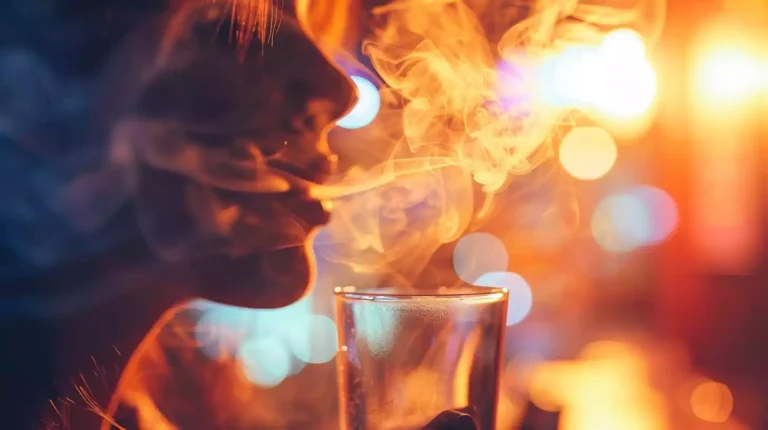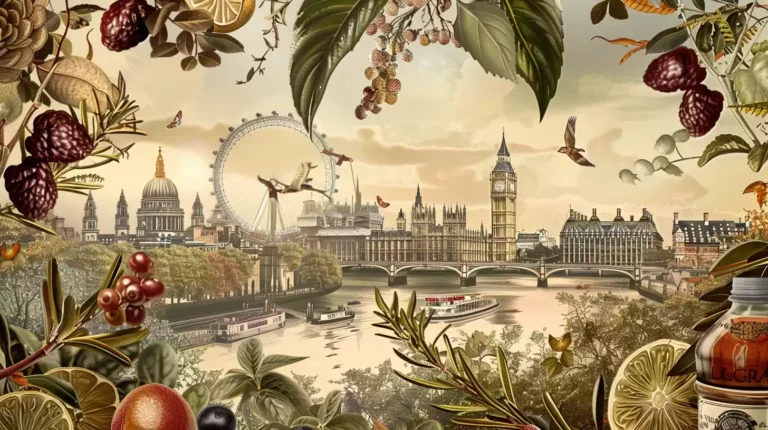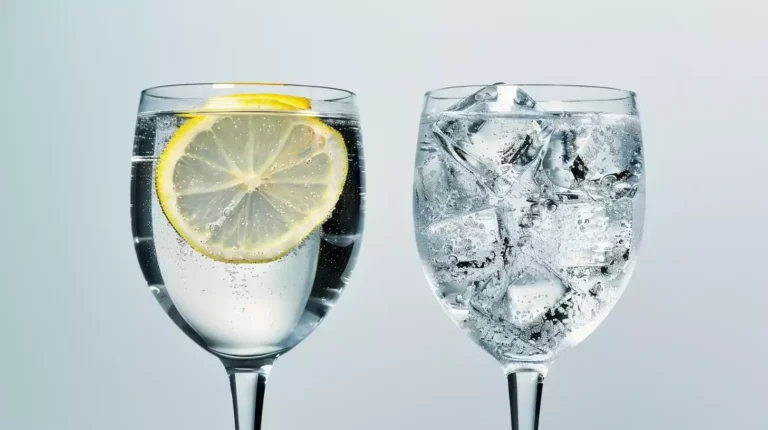East Meets West: Comparing Japanese Gin vs London Dry Gin
In the world of gin, there are wide varieties. Some popular ones include London Dry Gin, Portsmouth Gin, and Extra Dry Gin. Yet, more up-and-coming gins add flair to the drink, such as Japanese gins.
Japanese Gin is rather new to the world of gin, especially outside of its home country. This means many are curious about how it tastes and how different it is from the typical London Dry Gin most of us love. How are Japanese and London Dry Gin different?
Japanese Gin and London Dry Gin are different in:
- Origin
- Production Method
- Botanicals Used
- Flavor
- Mixability
- Popularity
- Popular brands.
As a result, those used to drinking London Dry Gin may either like, or dislike Japanese Gin.
This article explores the differences between japanese gin vs london dry gin. As you can pick up information, consider checking out Roku, a signature Japanese Gin.
How Are Japanese And London Dry Gin Different?
As a start, Japanese and London Dry Gin can be drunk interchangeably. Yet, serious drinkers may notice some differences.
| Aspects | London Dry Gin | Japanese Gin |
|---|---|---|
| Origin | – England – Also made in many places worldwide | – Japan – Still primarily made in Japan |
| Naming | – Points to a style of gin – Does not need to be made in London, UK. | – Points to gins from the country of Japan. – Needs to be made in Japan – May have different styles |
| Production Method | – Commonly uses reflux stills – Uses base alcohol from grains – May use sugar | – Commonly uses traditional pot stills – May use Shochu as the base alcohol |
| Botanicals Used | – Classic botanicals in gin | – Classic botanicals in gin – Local Japanese botanicals |
| Flavor | – Bold – Heavy juniper profile – Dryer finish | – Delicate and nuanced – More flowery taste – Slight tannic taste |
| Mixability | – Tend to be used in cocktails that prefer strong gin, eg. Martini | – Tend to be used in cocktails that prefer a light and refreshing taste, eg. Gin Fizz |
| Popularity | – Much more popular worldwide | – Popular in Japan – Rising popularity worldwide |
| Popular Brands | – Gordon’s – Bombay Sapphire – Beefeater – Tanqueray | – Roku – Ki No Bi – Komasa – Tenjaku |
This is because Japanese and London Dry Gin are different in many ways:
Origin
Both types of gin indicated their origin in their names. You can actually trace London Dry Gin’s origin back to the gin distilleries in the city of London.
The first London Dry Gin distillery is the Nicholson. It started distilling in 1736 in Clerkenwell, London. It still sells its own gin today.
Japanese Gin these days refers to all the types of Gin made in Japan. You can trace the story of Japanese gin back to Deshima Island in Japan. Japan lost its supply of gin from the Dutch due to the Napoleonic Wars and had to improvise.
As a result, a local attempted to make gin himself. Shige Dennoshin, the Deshima commissioner, produced the first Japanese Gin.
It tasted a little sweeter, as he could not cut the flavor from the resin of the Juniper berries.
Naming
London Dry Gin points to a particular style of gin. The London Dry Gin must be made by:
- Distilling natural botanicals.
- The process must use natural alcohol of agricultural origin
- The Alcohol By Volume (ABV) must be 96%
- Distillers cannot add anything after distillation except water.
- The minimum alcohol strength is 37.5%
It does not have a geographical reference. This means London Dry Gin does not have to come from London. Any distilleries who make gin in the described style can call their gin London Dry Gin.
This makes London Dry Gin different from terms such as Whisky or Cognac. Whisky must come from Scotland, and Cognac must come from the Cognac region in France.
Japanese Gin refers more to any gin that is distilled in Japan. This also means Japanese Gin must come from Japan and nowhere else.
Japanese Gin does not have a stringent definition of how to make it. But, Japanese Gin may often be distilled at a lower proof compared to London Dry Gin.
Production Method
Japanese Gin tends to use pot stills, which are also used to make whisky and other spirits. Pot stills are usually seen as slower and less efficient. But, many also believe that pot stills produce higher-quality spirits. The flavors also may be more complex.
Some Japanese Gin makers also tend to use Shochu as their base alcohol. Shochu is a local Japanese spirit, usually made from rice, wheat, or sweet potato.
London Dry Gin commonly uses reflux still. Many think reflux still is more efficient and helps to produce purer alcohol. This may explain why London Dry Gin has a more intense taste.
Some distillers add sugar to the base alcohol when making London Dry Gin. This may also explain why some brands of London Dry Gin are sweeter in taste.
Botanicals Used
London Dry Gin may use many local and European botanicals. Some include, but are not limited to:
- Juniper
- Orange Peel
- Lemon Peel
- Russian Coriander
- Orris Root
- Liquorice Root
- Angelica Root
- Cinnamon Bark
- Juniper Berries
Of these botanicals, London Dry Gin tends to have a stronger taste of Juniper berries.
Japanese Gin may use many of the botanicals used in London Dry Gin. But, they also see fit to add many local botanicals. These ingredients may include, but are not limited to:
- Green Tea
- Sakura Flowers
- Yuzu Peel
- Sanshu Peppers
- Bamboo
As a result, Japanese Gin may have a more complex flavor. This may appeal to some gin drinkers.
Flavor
In general, many drinkers appreciate and have grown comfortable with London Dry Gin. It has a straightforward, Juniper berry-heavy taste with a slight sweetness.
After you swallow, London Dry Gin tends to leave a dryer taste on the throat as well. This may be due to the higher alcohol content.
In contrast, Japanese Gin tends to be more mellow and delicate. It may initially have a stronger floral taste, with some tannic taste from teas. The complex taste balanced the less strong Juniper flavor.
After you swallow, Japanese Gin also leaves a drier throat. Yet, it does not come from alcohol but from Sanshu peppers.
Mixability
Japanese Gin and London Dry Gin have different flavor profiles. Japanese Gin is more mellow and complex. In turn, London Dry Gin is straightforward and robust.
As a result, mixologists use them differently. Japanese Gin is mainly used to make light, refreshing cocktails. This is because it will complement the citrus juices and flavors and not overpower them.
Japanese Gin’s mellow and complex flavor may also shine through better this way. Some popular Japanese Gin cocktails include Gin Fizz or a Negroni.
Looking for some inspiration on the best ways to drink Japanese gin? Our guide covers some really great ideas for you to try.
London Dry Gin is stronger, straightforward, and may deliver a punch. As a result, mixologists like to use them in cocktails with stronger flavors. These may include other liquor or liqueurs, coffee, and chocolate.
These stronger flavors may drown out Japanese Gin, but London Dry Gin can blend well with them. On top of that, London Dry Gin can contribute additional flavors to the drink.
Some popular cocktails with London Dry Gin include Martini, Gin and Tonic, and Tom Collins.
Popularity
When it comes to popularity, London Dry Gin wins hands down. London Dry Gin has been around for centuries, which means it has had a long headstart.
On top of that, wherever the British Empire goes, so goes the London Dry Gin. This means London Dry Gin is common and popular in places that were once part of the Empire.
As a result, sales of London Dry Gin are very high. Gordon’s is the world’s best-selling London Dry Gin, which sold over 7.4 million liters in 2021 alone.
Japanese Gin only first became commercially successful in the 1920s. It was happy to remain in its home market and not exported worldwide until the 2000s.
In fact, many drinkers only noticed Japanese Gin after the rise of Japanese whiskeys. As Japanese whiskeys won many awards, people started taking notice of Japanese distilleries.
As a result, Japanese Gin is a more recent phenomenon and is a rising star in the world of Gin.
This is very obvious when you compare the sales. Roku sold about 3.7 million liters worldwide in 2021. Roku is behind the top three best-selling gins, Bombay Sapphire, Gordon’s, and Tanqueray.
Popular Brands
London Dry Gin is much more common and popular worldwide than Japanese Gin. In fact, many people can immediately name brands of London Dry Gin more than Japanese ones.
Some of the best-selling London Dry Gin includes brands such as:
Gordons: First distilled by Alexander Gordon, it debuted in 1769 in London. Gordon’s are the favorite gin of many figures, such as Ernest Hemingway. It is the world’s best-selling gin.
Tanqueray: Charles Tanqueray founded Tanqueray gin in 1830 in London, England. It operated until the original distillery was bombed during World War 2. Tanqueray is famous for its green-colored and round bottle.
Bombay Sapphire: Bombay Sapphire is a more recent invention, founded in 1986. The name refers to the violet-blue colored Star of Bombay, a stone mined from British Ceylon, now Sri Lanka. Bombay Sapphire is also recognized for its blue-colored bottle.
Beefeater: Beefeater Gin was perhaps most recognized as the gin used to make Martini. The name refers to the Beefeater Yeoman, bodyguards of the British monarchy. It has a clear bottle with a picture of a marching Yeoman.
Japanese Gin is up and coming in popularity. Yet, it does not have many recognizable brands. This may be because not many large distilleries in Japan can produce a large amount of gin.
As a result, you may not see many mass-produced Japanese gins, but many small distilleries produce craft, artisan gins.
Some of the best-selling Japanese Gins include:
Roku: meaning ‘six’ in Japanese, Roku is the best-selling Japanese Gin. It is also one of the first Japanese Gin many people drink. It has a flowery, mellow tone with a tannic taste from the green tea. It has a clear, hexagonal-shaped bottle.
Nikka Coffey Gin: Nikka’s gin may have the name ‘Coffey,’ but there is no coffee in it. In fact, it tastes light and complex, with hints of citrus and apple. There is also a hint of Sanshu pepper, which contributes to its dry finish.
How Did Japanese And London Dry Gin Begin?
Both London Dry Gin and Japanese Gin can be traced back to the Dutch, who imported them into England and Japan. The locals eventually developed a liking for it, and created their own versions.
Japanese Gin may share the same ancestors as the London Dry Gin. Both the English nor the Japanese did not make gin by themselves. Rather, they actually first discovered it from the Dutch.
The Dutch first exported gin as botanical-laced spirits with medicinal qualities. The English loved it so much that they made more by themselves.
Distilleries around London end up developing their own version. This version is aptly named the London Dry Gin in honor of the city it was born in.
The London Dry Gin eventually spread worldwide together with the British Empire. This resulted in the world developing a taste for London Dry Gin. As a result, many distilleries around the world also make London Dry Gin.
The Dutch also exported gin to the Japanese, who drank it as a luxury imported drink. Japanese high society drank gin to separate themselves from commoners, who drank Shochu.
Napoleonic Wars in Europe caused the importation of gin to stop. This forces the local Japanese distilleries to try to make one themselves.
The DIY effort eventually resulted in the usage of local ingredients. For example, Shochu was used as base alcohol. Distilleries also added local botanicals such as Sakura flowers and green tea.
It took many decades of effort and trial and error, but Japan broke through. In the 1920s, Japan finally made its first commercially successful gin, the Suntory Gin.
READ MORE: When Did Japanese Gin Start?
Final Thoughts
Japanese Gin and London Dry Gin differ significantly in their origin, production method, botanicals used, flavor, mixability, and popularity.
While London Dry Gin has been around for centuries and is produced in a traditional way, Japanese Gin is relatively new and often incorporates unique botanicals such as yuzu and Japanese pepper.
The flavor of Japanese Gin is typically more subtle and nuanced, while London Dry Gin is known for its bold juniper flavor.
Both gins are great in cocktails, but due to their varying flavor profiles, they may lend themselves better to different types of drinks.
Both types of gin have their own distinct characteristics and are worth exploring for anyone looking to expand their gin palate.







